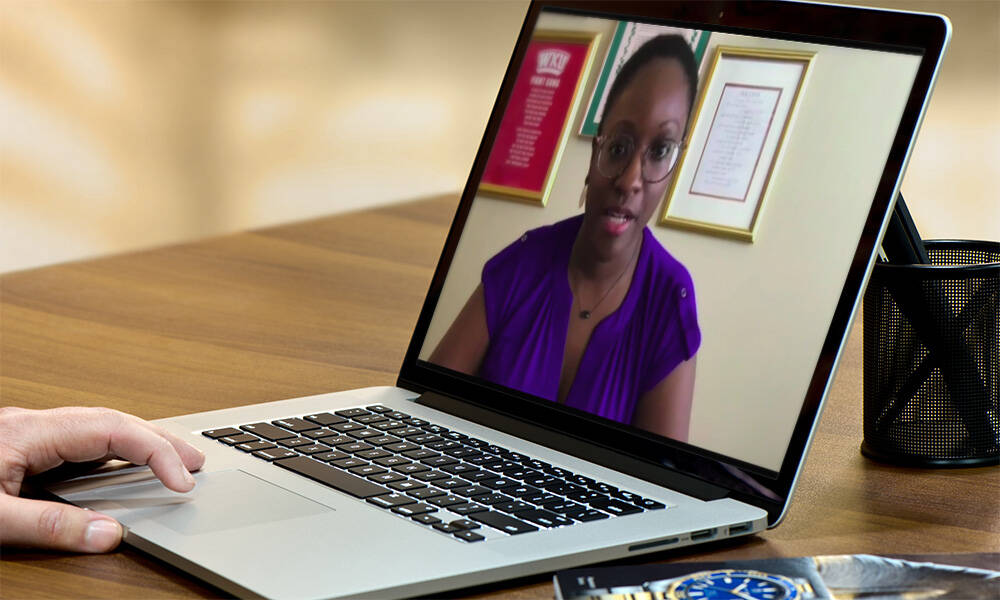
In Times of Crisis, Resilience Means Putting Members First
A snapshot of the National Association of Secondary School Principals pandemic response.
In the face of the worldwide pandemic, many organizations experienced what could be likened to pushing an airplane off a cliff and trying to fix it on the way down.
For the National Association of Secondary School Principals (NASSP), the impact of the lockdown was felt immediately from all sides of their operation. “We were balancing two things,” explains Dennis Sadler, NASSP’s Deputy Executive Director for Operations. “One was recognizing the challenge that every principal across the United States was dealing with in having to shut down their schools and switch to remote learning for their students. And the other part was figuring out how to support our own staff so that we could keep operating effectively.”
Pre-Covid-19, the NASSP had what Sadler calls a “traditional culture” with no existing work from home policy. The transition would not be simple, but having implemented a new technological infrastructure at the association a few years prior, Sadler felt confident that they could manage both ends of this historic disruption. “Utilizing technology, I knew that we were in a position to be able to quickly pivot and move to work from home and focus on our members’ needs.”
Here’s how the NASSP went about problem-solving for their members and for themselves.
Meeting Needs Through Connections
“The first thing we did is recognize that, as a group, principals really appreciate and depend on one another as peers,” explains Sadler. “We knew there was an absence of true guidance coming from any critical sources, so we wanted to bring leaders together in a format where it wasn’t a traditional webinar. It needed to be a conversation.”
To meet this need, the NASSP created a series of virtual town halls called Leading Through Crisis where school leaders discussed leveraging technology for distance learning and individualized education plans for kids. The registrations, attendance and engagement in the chats were far beyond anything that the NASSP had seen before. “That was an immediate win for us,” says Sadler.
To meet members’ needs on a daily basis, the NASSP utilizes Personify360, which keeps things efficient for both sides of the conversations. “We have a voice over IP system that allows our customer care representatives to collaborate in real-time. If a staffer is on a call supporting a customer, they have the ability to lean on other team members for support. And beyond that, notes about emails, conversations, phone calls, and other customer transactions are tracked through the system. Any one of our reps on any given day is able to understand what has been taking place with a particular customer while they’re on the phone with that individual.”
Over-Communicating With Staff
Moving to a work from home setup, the organization took proactive steps to make sure staffers felt as supported as possible. “We recognized the anxiety people were feeling — regardless of what their roles were at work. They could be dealing with any number of additional issues: kids engaged in remote learning while they’re home trying to work, caring for somebody who is sick, having family members who lost their jobs. So it was about being more communicative than less.”
This approach of total transparency helped keep the staff in lockstep, and also provided relief. “Funny enough, the email that I got the most responses from had nothing to do with work. It was simply an image I shared of my family dog sitting on the couch and looking out the window as if to say, ‘When are you crazy people are going to get out of this house and leave me alone?’ We recognized that as an organization, you need that kind of stuff because you don’t have those water-cooler moments in the office anymore.”
Listening Before Taking Action
“A mistake I’ve seen many times is an association that develops products, services and experiences in a vacuum, and then tries to convince people why they need to buy it,” says Sadler. “You need to listen to your members first and look for opportunities where you can meet a need or solve a problem. And then quickly engage with them to co-create a solution.”
After traveling across the country (pre-pandemic) and meeting with affiliates, Sadler says that over and over again they heard executive directors saying that they loved the annual professional development event NASSP hosted for them, but wished they could collaborate more frequently and with people who worked at different levels.
“We started thinking internally about how to meet this need, and eventually landed on a no-brainer solution: ‘Why don’t we build an online community for our state affiliates?’ We pitched that idea to 10 of the 51 executive directors and they loved it,” explains Sadler.
Most recently, NASSP began piloting the online experience powered by Personify Community and the response has been tremendous. “It’s given us the opportunity to bring disparate, unconnected state and regional activities together across our affiliate associations and centralize them in this community,” says Sadler. “And from organizing virtual conferences to sharing responses to racial unrest, it has fostered real collaboration.”
Personify—We know this challenging time has created new and unique challenges in engaging with members, managing financials and driving your organization forward. Personify is committed to helping you adapt and emerge from COVID-19 or any crisis, more connected and resilient than ever. Our trusted solutions help you manage during and through these times with digital connections, virtual programming, a single source of truth for your data, and peace of mind for your members.
(courtesy NASSP)





